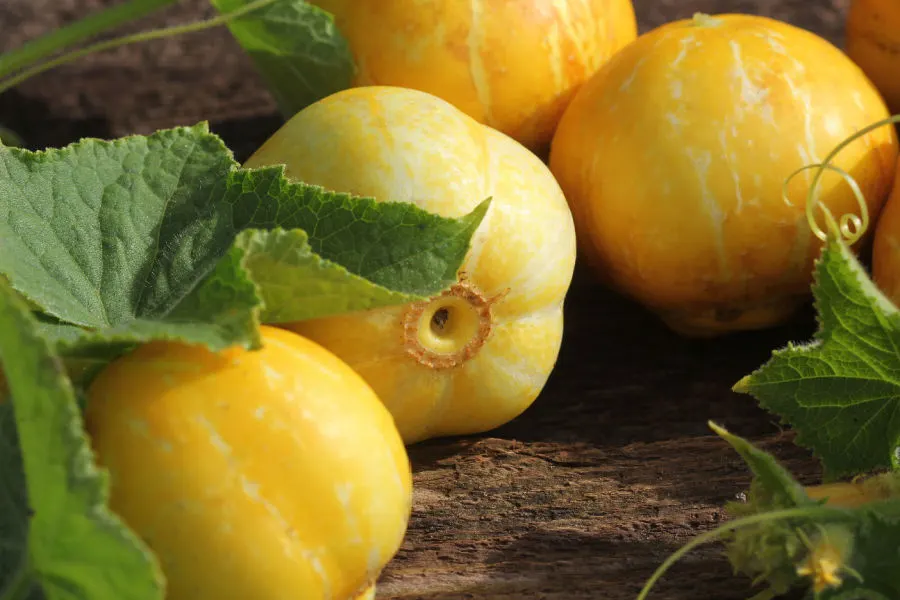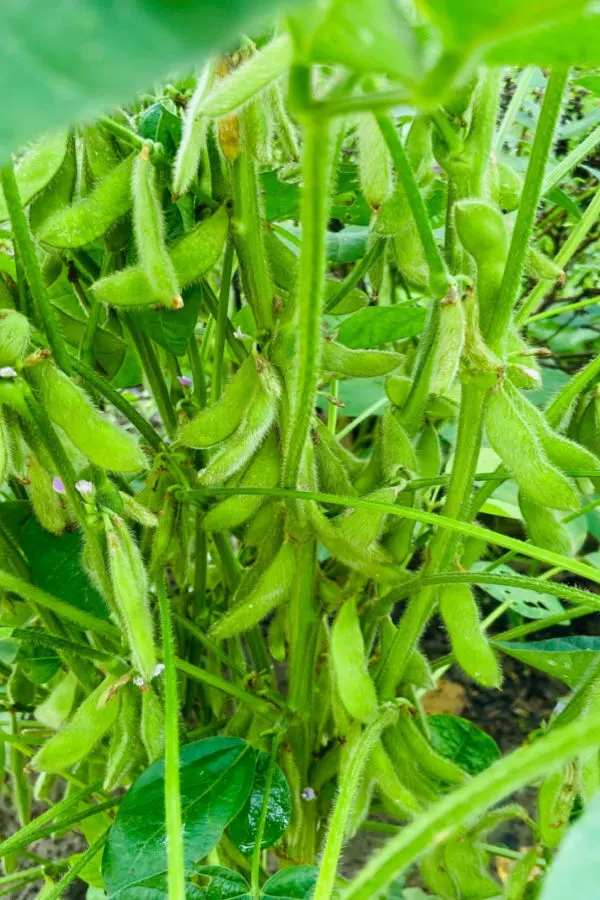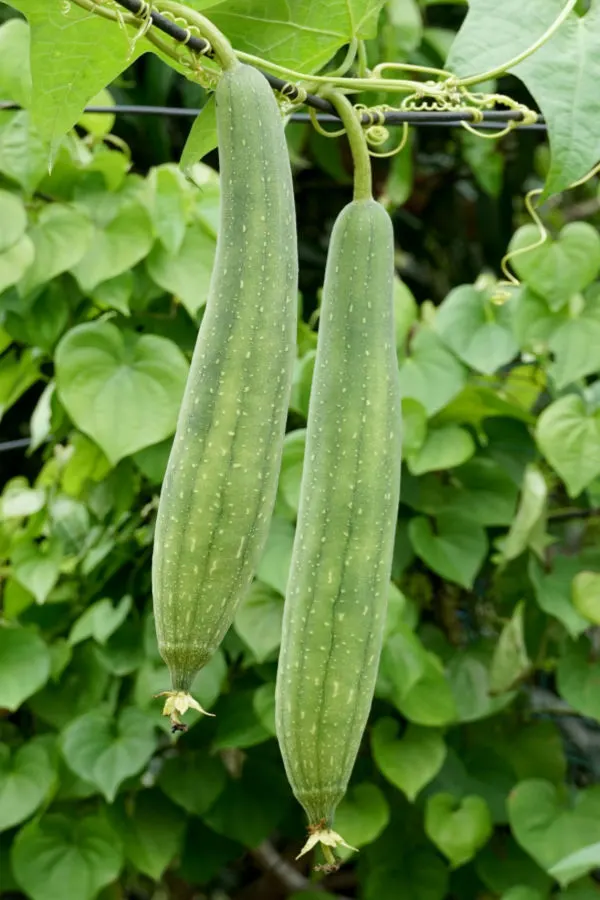Looking for a few unique vegetable plants to grow from seed this year to add a little flair to your garden and taste buds?
For many gardeners, one of the most exciting aspects of a new garden season is the chance to try out a few new plants or growing styles. That couldn’t be more true for us and our garden at the farm. In fact, we spend countless hours every winter perusing all of our favorite seed catalogs and websites always looking for something fun and unique to try.
A few of our past trial plants turned have now turned into some of our favorite plants to grow every year. Of course, there have been some complete busts as well. But for us, that is just part of what makes it all interesting and fun.

With that said, this year’s list is certainly full of some unique vegetables that will have visitors to your garden talking. One thing is for sure, if you plan on growing any of the plants below, get your seeds early! As a matter of fact, it’s important to get all of your seeds for your vegetable and flower plants early this year.
The last couple of years, it has been amazing just how quickly seed companies have been selling out of their stock. Guess it just goes to show how popular growing your own food and flowers is becoming. Now let’s take a look at this year’s list!
4 Unique Vegetable Plants To Grow
#1 Edamame
Yes, you can grow your own edamame – and it’s easier than you can ever imagine! For those that love having steamed edamame as an appetizer or little snack, here is your chance to grow your own in your backyard garden
If you happen to be unfamiliar with edamame, they are bean pods (actually immature soy beans) that when boiled or steamed for a few minutes, turn into a tasty treat. Especially when a little salt, hot sauce, or your favorite seasoning is sprinkled on top.
They have become hugely popular as a restaurant appetizer. But by growing your own plants, you can enjoy amazing fresh edamame all summer long right at home. Perhaps best of all, they are very healthy too! As a reminder, Edamame should always be cooked and not eaten raw. As all soybeans do, they contain lectins and saponins, which in their raw form will cause nausea.

Edamame is a legume and grows very similar to bush beans. They can grow in a traditional garden, raised bed, and even in a container setting as well. Seeds can be directly sown as soon as the soil warms and the threat of frost is gone.
Edamame usually takes ten to twelve weeks from seed to harvest. Plants are heavy producers of pods. In fact, you can expect a harvest of a little over 2 pounds of pods per plant! Space your plantings over several weeks to ensure fresh edamame all summer long.
Tomatillo – 4 Unique Vegetable Plants To Grow From Seed
We have been growing the tomatillo plants in our garden and our 5 gallon bucket planters for about 5 years now, and for us, it has become a must-grow vegetable! Not just because of its unique growing style, but for its amazing and delicious tomatillos.
Often mistaken as a little green tomato, the tomatillo isn’t a tomato in the least. Although the plant is a fellow member of the nightshade family of plants, the tomatillo sets it fruit quite differently. Instead of forming small fruits that grow larger with time, the tomatillo first produces a papery lantern that hangs off of a stem.

The fruit then slowly forms inside of the lantern and matures. How do you know when to pick they are ripe and ready for picking? The lantern lets you know by cracking slightly open when the fruit matures to about two inches in diameter.
The whole process from seed to harvest is one thing that is more similar to tomatoes and peppers, taking about 90+ days. For this reason, it is best to start seeds indoors prior to planting.
Be Sure To Plant Two!
When planting tomatillos, always be sure to plant at least two. The tomatillo is actually not able to pollinate its own blossoms. Because of that, it needs an additional tomatillo plant within 20 to 30 feet to cross pollinate.
One thing is for sure, the plant can grow almost anywhere. Although it performs well in traditional garden settings, the plant’s compact growing habit makes it great for containers and patio planters as well.
When growing, tomatillos will need a little bit of support in the form of a small stake or cage. This will help the plant to keep its main stem sturdy as fruit develops. There are several varieties of tomatillo besides the traditional green fruit, including purple, pineapple and ground cherry.
We are partial to the traditional green and the purple varieties, using the slightly tart fruit to make incredible homemade salsa verde and one of our favorite soups of all, chicken chile verde!
- Affiliate Seed Link : Traditional Green Rio Grande Tomatillo Seeds
- Affiliate Seed Link : Purple Tomatillo Seeds
Lemon Cucumber – 4 Unique Vegetable Plants To Grow From Seed
Are you a cucumber lover? Then growing lemon cucumbers (pictured at the top of the article) is a must try for this gardening season!
Lemon cucumbers are truly a unique and flavorful plant that will have any visitor to your garden asking questions. Especially when they bite into this incredibly delicious cucumber variety that doesn’t look like a cucumber at all!

Lemon cucumbers really look more like a yellow tennis ball than a traditional slender cucumber. The fruit grows to a round two to three inch diameter ball on climbing or rambling vines. They have a mildly sweet taste that is perfect for fresh eating, salads – and yes, even pickling!
Lemon cucumber seeds can go in the soil directly once the threat of frost has passed. With a harvest time of 65 days, you can grow a spring crop and replant for fall too.
Luffa Gourds – 4 Unique Vegetable Plants To Grow From Seed
How many plants do you know that can grow and produce a delicious vegetable – and a sponge you can use in your house, all from the same fruit? Well, with the Luffa plant, you can!

As a member of the gourd family, the luffa produces gourds from it blooms that can be eaten or dried to use as a luffa sponge. The climbing plant is a wonderful conversation piece, and produces a good crop of long skinny fruit.
Luffa does not have a lot of special requirements to grow, needing typical loose and fertile garden or potting soil to grow to maturity. Like other curcurbits, they do require consistent water to produce their cucumber like fruit.
For eating, harvest when young to avoid seedy flesh and to maximize tenderness. If you are looking to grow sponges, simply allow the fruit to stay on the vine and dry out. Once brown and dry, pick the fruit and allow it to cure for a few weeks before using as a sponge.
Here’s to trying a new and unique vegetable plant in your garden this year from seed. And even more, to adding a little more fun and interest to your garden season. Happy Gardening, Jim and Mary.
Jim and Mary Competti have been writing gardening, DIY and recipe articles and books for over 15 years from their 46 acre Ohio farm. The two are frequent speakers on all things gardening and love to travel in their spare time.
As always, feel free to email us at thefarm@owgarden.com with comments, questions, or to simply say hello! You can sign up for our free email list in the subscribe now box in the middle of this article. Follow us on Facebook here : OWG Facebook. This article may contain affiliate links.

